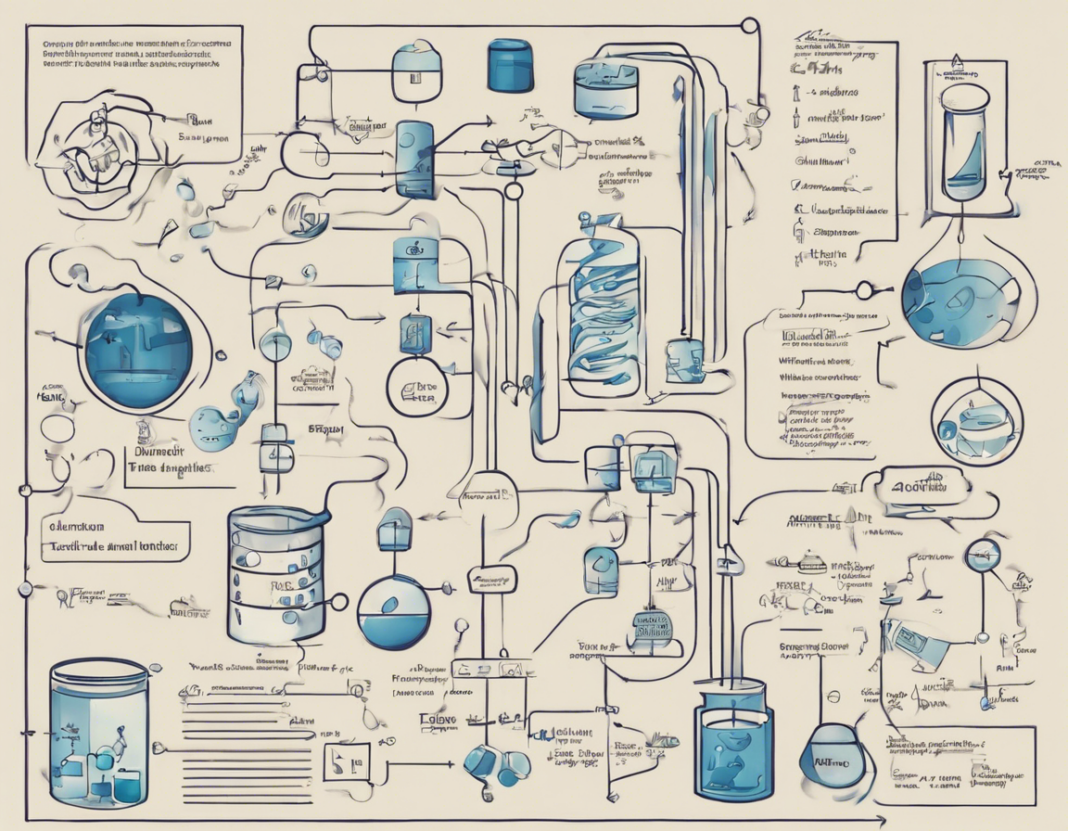Processes are an integral part of daily life, whether in business, industry, or even the human body. They define the sequence of tasks or activities that lead to a specific goal or outcome. In this article, we will explore the generic elements of a process and break down the key components that you need to understand to effectively analyze and improve processes in any context.
Understanding Processes
Before delving into the elements of a process, it is crucial to have a clear understanding of what a process entails. A process can be defined as a series of actions or steps taken in order to achieve a particular end. Processes can be sequential, where each step follows the one before it, or parallel, where multiple steps can occur simultaneously.
Processes can vary in complexity, from simple tasks like making a cup of coffee to complex business operations like manufacturing a car. Regardless of the scale or nature of the process, certain key elements remain consistent across different types of processes.
Key Elements of a Process
1. Input
The input is the starting point of any process. It refers to the resources, materials, or information that are required to initiate the process. Inputs can be tangible, such as raw materials in a manufacturing process, or intangible, such as data in a decision-making process.
2. Activities/Steps
Activities or steps are the individual tasks or actions that need to be performed in a sequential or parallel manner to move the process forward. Each activity should have a clear purpose and contribute to achieving the overall goal of the process.
3. Tools/Resources
Tools and resources are the instruments, equipment, or software needed to execute the activities within the process. These can range from physical tools like machinery in a production process to digital tools like software applications in a data analysis process.
4. Controls
Controls are the mechanisms put in place to ensure that the process is carried out effectively and efficiently. This can include quality control measures, checkpoints, feedback loops, and performance indicators to monitor the progress and success of the process.
5. Outputs
Outputs are the results or outcomes produced at the end of the process. They can be tangible, such as a finished product, or intangible, such as a decision or a report. The quality and alignment of the outputs with the desired outcome indicate the effectiveness of the process.
6. Feedback
Feedback is essential for continuous improvement of a process. It involves gathering information about the outputs and performance of the process, analyzing it, and using it to make adjustments or corrections to enhance future iterations of the process.
Process Analysis and Optimization
Analyzing and optimizing processes is crucial for enhancing efficiency, reducing costs, and improving outcomes. By examining each of the key elements discussed above, organizations can identify bottlenecks, inefficiencies, or opportunities for improvement within their processes.
Strategies for Process Analysis and Optimization:
-
Value Stream Mapping: A visual tool for analyzing the flow of materials and information in a process to identify areas of waste and inefficiency.
-
Root Cause Analysis: A method for identifying the underlying causes of problems or deviations in a process to address them effectively.
-
Lean Six Sigma: A combination of Lean Manufacturing principles and Six Sigma methodologies to eliminate defects and streamline processes.
-
Kaizen: A philosophy of continuous improvement that involves making small, incremental changes to processes to achieve better results over time.
-
Benchmarking: Comparing processes with industry best practices or standards to identify areas for improvement and set performance targets.
Frequently Asked Questions (FAQs)
1. What is the importance of process documentation?
Process documentation is crucial for ensuring clarity, consistency, and accountability in processes. It provides a reference point for all stakeholders involved in the process and facilitates smooth execution, monitoring, and optimization.
2. How can I identify bottlenecks in a process?
Bottlenecks in a process can be identified by analyzing the flow of activities, resources, and information. Look for points where work accumulates, delays occur, or resources are underutilized, as these are often indicators of bottlenecks.
3. Why is feedback important in process improvement?
Feedback enables organizations to gather insights, identify issues, and make informed decisions about how to optimize processes. It helps in understanding the impact of changes and ensures that improvements are aligned with the desired outcomes.
4. What are the common challenges in process optimization?
Common challenges in process optimization include resistance to change, lack of data or analytics, siloed operations, and inadequate resources or expertise. Overcoming these challenges requires a systematic approach and leadership commitment.
5. How can automation support process optimization?
Automation can streamline repetitive tasks, reduce human error, and accelerate process cycle times. By implementing automated workflows, organizations can improve efficiency, consistency, and scalability in their processes.
In conclusion, understanding the generic elements of a process and the key components that contribute to its effectiveness is essential for driving continuous improvement and innovation. By analyzing processes, identifying opportunities for optimization, and implementing best practices, organizations can enhance their productivity, quality, and overall performance.
